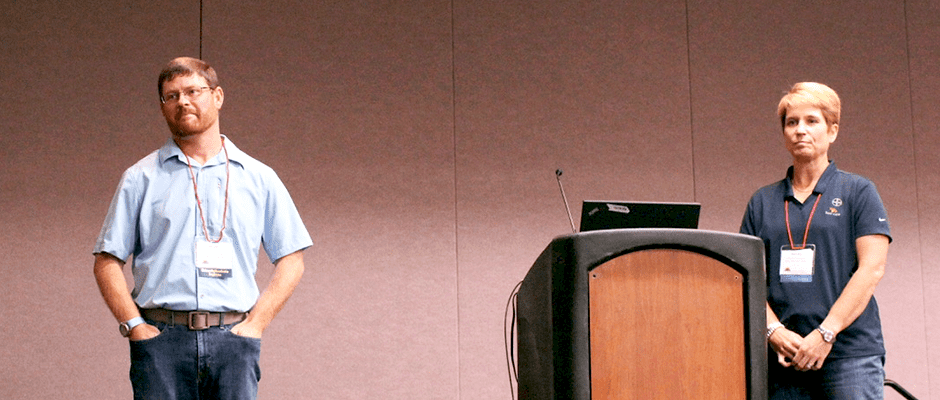Share this article
Bayer and partners help create pollinator habitat
When most people think about Bayer, they automatically think of aspirin, the company’s most famous product. What they probably don’t know is that the company has also been helping with pollinator health for more than 30 years.
At the Partnerships for Healthy Pollinators session at the TWS Annual Conference in Albuquerque, N.M., Becky Langer, the project manager with Bayer Bee Care and Brood Acre Food Chain, discussed some of the ways partnerships, like the one with TWS, have helped benefit bee species.
“We often get caught up in thinking that pollinators are important for our food supplies, which is true, but it’s also important for a functional ecosystem,” Langer said.
Langer discussed challenges for both managed and unmanaged — or wild — bees in the United States, but she said both of types work well for crop pollination. By promoting healthy hives and controlling disease, she said, Bayer helps combat some of these challenges, such as incidental pesticide exposure, lack of forage or nutrition and urbanization.
The company also launched the Feed a Bee program in 2015, planting wildflowers on meadows, rights of ways and other areas to improve pollinator habitat. “This can become an all-you-can-eat buffet for pollinators if we manage that correctly,” Langer said.
The Wildlife Society, now one of 127 of Bayer Feed a Bee’s partners, has been involved in the “Tweet a Bee, Feed a Bee” initiative. For each Tweet using the #FeedABee hashtag, Bayer pledged to plant wildflowers on their “bee-half.”
Scott Longing, an assistant professor of entomology at Texas Tech University, said he partnered with Bayer Bee Care to implement pollinator forage in Texas. The region faced issues such as colony collapse disorder and disease, he said.
Bayer increased pollinator foraging habitat with the Feed a Bee Program as well as a 2016 National Pollinator Planting event, he said. The company ended up creating two different pollinator fields where they planted native grasses and other seeds.
“If you’re thinking about developing a pollinator habitat or a demonstration plot, I would take the first year to do nothing but prepping the area,” Longing said. He also said taking into account species such as jackrabbits and harvester ants, which eat many of these seeds, is important in managing pollinator habitat.
So far, he said, he has seen an increase in bees and other pollinators in the area. “’If you build it, they will come’ looks to be true,” he said.








